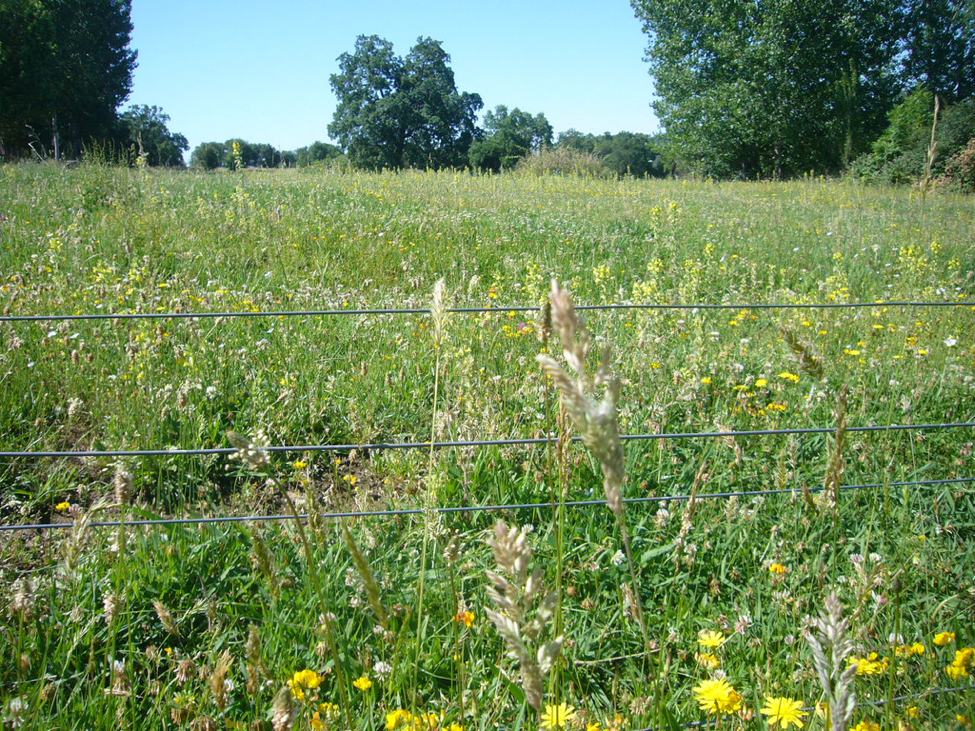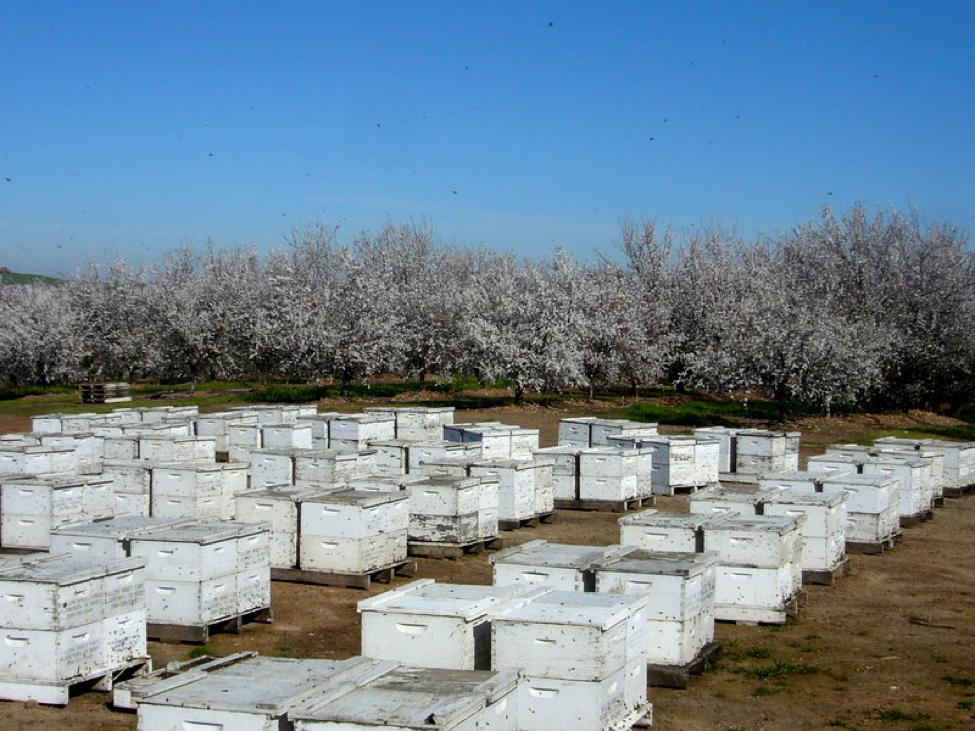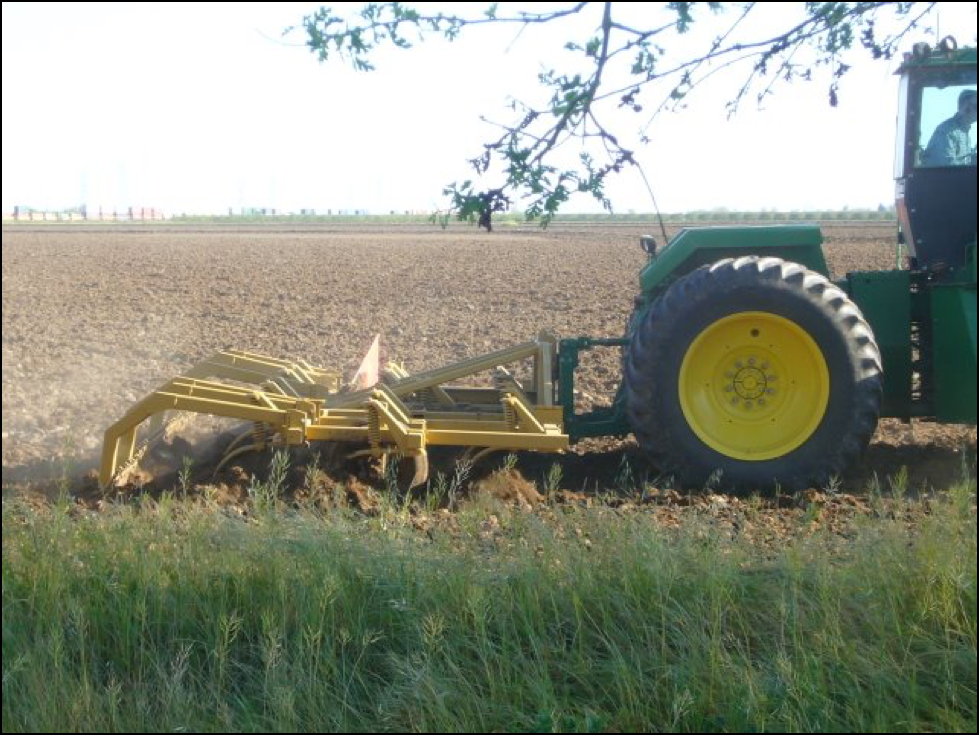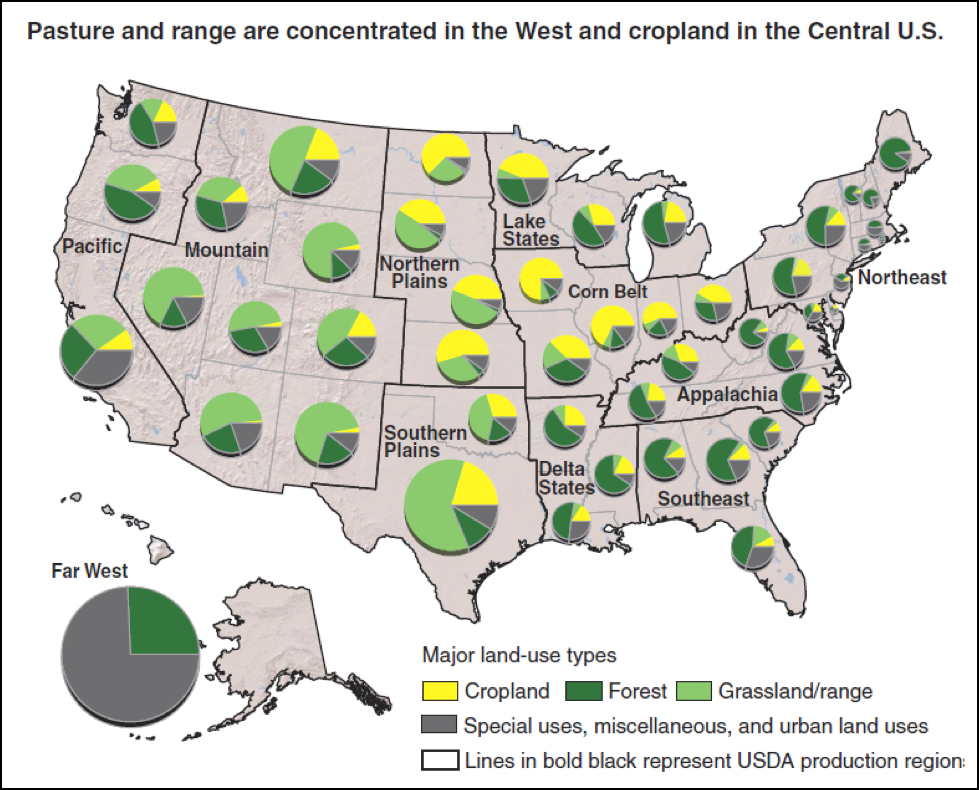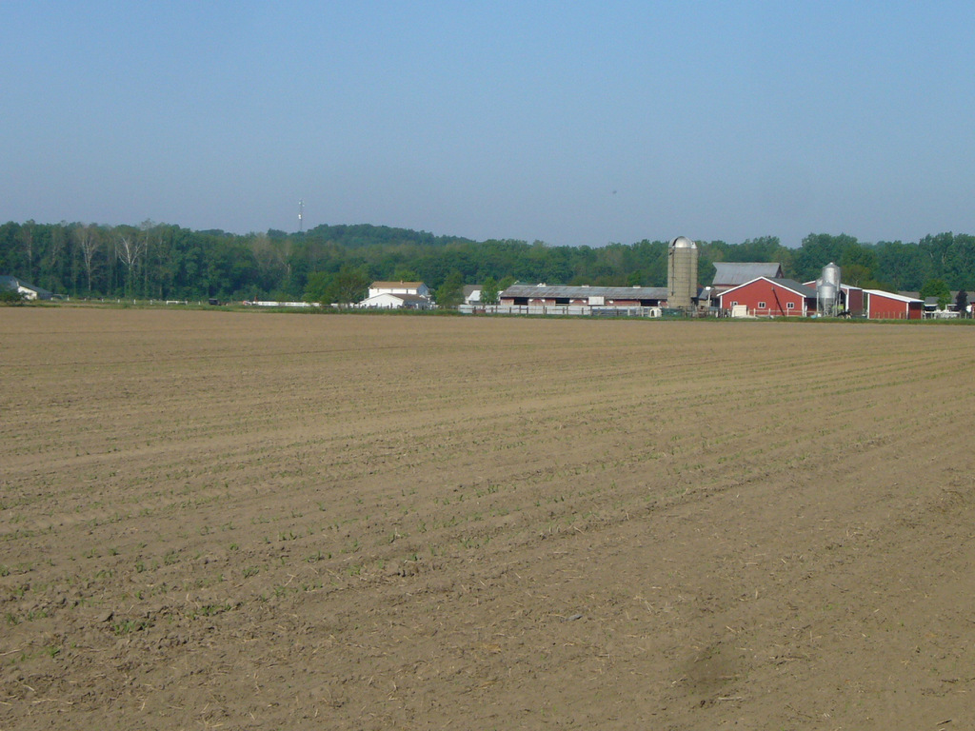Sick Bees Part 18C: Colony Collapse Revisited – Environmental Factors
Sick Bees Part 18c:
Colony Collapse Revisited
Randy Oliver
ScientificBeekeeping.com
Originally published in ABJ October 2012
Beekeeper Management Practices
HAARP (The High Frequency Active Auroral Research Program)
Cell Phones/Electromagnetic Radiation (EMR)
Sorry for my recent diversion from this series while I addressed the neonicotinoid insecticides. Please allow me to continue with my retrospective analysis of the suspects suspected or implicated, rightly or wrongly, to be the cause of CCD.
In the previous article of this series, it seems that I hurt the feelers of some beekeepers by irreverently dismissing some of their pet suspects for Colony Collapse. Unlike during the peak of CCD, when researchers were desperately following up every possible lead, I have the advantage of retrospection, as well as now having had the opportunity to observe and study sudden colony depopulation again and again.
However, before I get to the real meat of CCD, I feel that it would be to the benefit of the reader to cut through the muddle of all the various things that have been blamed for being the cause of the disorder by evaluating each of them using scientific logic.
Although most named suspects are biologically plausible, a number can be quickly ruled out by the application of Koch’s postulates—either that suspect isn’t always present during collapse events, or doesn’t always cause the problem when it is present. I’ll address the suspects in the following order (spoiler: I’m saving the best for last).
- Beekeeper management practices
- Environmental factors
- Chemical exposure
- Biological agents
Although my focus will be upon determining the “proximate causative agents” of sudden colony collapse, I’ll also examine how the various suspects may contribute to colony mortality or morbidity in general. In order to pick up the thread of this series, and to review the terms that I’ll be using, you may wish to reread the previous installment (available at my website1.
Beekeeper Management Practices
Due to his being a government employee, Colony Collapse researcher Dr. Jeff Pettis, unlike me, must be careful that his public statements are politically correct. But in his presentations on CCD, he can’t help but candidly note that 25% percent of beekeeping operations accounted for fully 75% of total colony losses. And any apiary inspector will tell you that it was usually the same beekeepers over and over. This fact certainly suggests that beekeeper management practices may be related to the degree of colony mortality in an operation.
Let me be perfectly clear here—CCD can happen to anyone, and there is nothing funny about it. If you’ve never watched the film “The Last Beekeeper,” you should. In it, hard working beekeepers are brought to tears as they watch their operations collapse from CCD just prior to almond bloom—leading to their financial ruin. I’ve experienced CCD myself, and wouldn’t wish it upon anyone!
That said, CCD also quickly became an excuse for absolving oneself of the consequences of PPB (Piss Poor Beekeeping). I’ve heard many a beekeeper who knew damn well that his colonies died from varroa or some other form of neglect, later piously tell a reporter that they were hit by CCD!
Here’s the thing: I’ve visited beekeepers all over the country. Even in areas in which some “noisy” beekeepers blame their elevated colony losses upon pesticides, the weather, the alignment of the stars, or some other factor, there are always other “quiet” beekeepers who experience very low losses under the same conditions. The difference could be luck, but more often appears to be due to better management.
Biological plausibility: Allow me to quote from the original CCD report, back when it was still called “Fall Dwindle Disease”2:
“All [affected operations] experienced some form of extraordinary “Stress” at least 2 months prior to the first incidence of “die off” associated with “Fall dwindle disease”. The nature of this stress was variable but included nutritional stress (apiary overcrowding, pollination of crops with little nutritional value), dramatic pollen and nectar dearth, or varroa mite pressure.”
Honey bee colonies can handle a lot of insults so long as they get enough high-quality forage (Fig. 1) to maintain vigorous broodrearing, and are not hamstrung by parasites. Those beekeepers who make sure that their colonies are always well fed, especially with protein, and never allow varroa infestation to exceed a few percentage points, appear to have far fewer problems than others. In some areas, treatment against nosema also appears to help.
Figure 1. One common denominator for healthy colonies is that they have year ‘round access to high quality forage. A profusion of pollen sources promotes strong broodrearing and a robust immune system. In the arid West, patches of irrigated pasture such as this are precious, and you’d no more tell other beekeepers where you found them than you’d brag about where your favorite fishing hole was.
Analysis:
Transportation stresses from migratory beekeeping—non beekeeper bloggers love to blame CCD on our “unnatural” moving of bees from one location to the next. In truth, bees, due to their innate ability to reorient to a new location after swarming, seem to take being moved in stride. In my own operation, I follow the bloom up the mountains during the season, akin to moving other livestock to better pasture, and my colonies are the better for it. Even colonies moved from the East Coast to California and back do not appear to suffer greatly from transportation.
Multiple pollination contracts—If bees are moved from one pollination contract to another, they may suffer from poor nutrition and exposure to pesticides. This problem can generally be mitigated by supplemental feeding (Fig. 2) or by “resting” them on natural pasture to rebuild.
Figure 2. One management practice that beekeepers learned from the CCD experience is the value of feeding supplemental protein. There are several high quality pollen supplements now on the market. Not only can good nutrition boost the bees’ immunocompetence, but the colony can convert this protein into replacement bees to take the place of those lost due to disease or pesticides.
Feeding of high-fructose corn syrup–HFCS has been blamed with little supportive evidence. Granted, HFCS can become toxic to bees due to the formation of hydroxymethylfurfural if it is overheated or stored for long periods in metal containers, but most commercial beekeepers are now aware of this. No correlation has been found between the feeding of HFCS and CCD.
Overcrowding of locations—just as other livestock cannot thrive if they are overstocked onto insufficient pasture, too many hives in one area compete for limited resources. If a beekeeper places a hundred hives into an apiary that has adequate forage for only two dozen, he can expect those colonies to have problems.
Holding yards—the need to stockpile semi loads of hives at certain times of the year can create serious problems due to:
- The nutritional stress due to inadequate forage as mentioned above.
- The behavioral stress caused by the robbing pressure between overstocked colonies.
- The fact that crowded bees all “share spit” in nearby flowers and at water holes. Need I explain the consequences?
Easy transmission of virulent strains of pathogens (especially the constantly-mutating viruses) that may spontaneously arise in one or more hives (the more hives, the more chance of the evolution of a new strain). Drifting, robbing, and hitchhiking varroa mites can quickly spread that pathogen throughout the entire yard (Fig. 3)! In a number of instances, beekeepers observed CCD spreading from one group of sick colonies to adjacent holding yards.
Figure 3. Perfect conditions for the spread of an epidemic. In this almond orchard, as with many monocultures, there is virtually no bee forage prior to, or immediately after the bloom, resulting in colony nutritional stress. Even in good honey locations, beekeepers must keep in mind the forage conditions at times other than during the flow.
Other commercial beekeeping practices—some “natural beekeeping” advocates have blamed the use of antibiotics, synthetic miticides, or sugar feeding for CCD, but these practices were common prior to CCD, and are used in many operations that have not experienced CCD, so the charges simply don’t stick.
Verdict: I’m not buying the notion that CCD can be blamed on commercial beekeeping practices per se, since no particular practice is always associated with colony collapse, nor does any particular practice always create it. But poorly managed colonies–whether in a large commercial or small organic operation–appear to be more susceptible to mortality or collapse. Good bee husbandry—including proper nutrition and parasite management—goes a long way toward keeping colonies healthy. One need only note how commercial beekeepers were able to ramp up their colony numbers for almond pollination when the growers made it financially worthwhile for them to invest in good management practices!
Environmental Factors
OZONE AND AIR POLLUTION
Biological plausibility: Ozone is highly reactive chemically, and oxidizes organic molecules. “The scent molecules produced by flowers in a less polluted environment, such as in the 1800s, could travel for roughly 1,000 to 1,200 meters; but in today’s polluted environment downwind of major cities, they may travel only 200 to 300 meters…This makes it increasingly difficult for pollinators to locate the flowers.”3
Analysis: Although the negative effect of ozone upon bee foraging success is biologically plausible, neither the timing nor location fit the sporadic occurrence of CCD. The timing is wrong, since ozone levels (and general air pollution) in the U.S. have actually been dropping since the early 1990’s and ozone levels showed a notable decline after 2002.4 Neither does location fit, since CCD occurred in rural areas with little ozone, and conversely is not normally a problem in my area of the Sierra foothills, which often (and unfortunately) has one of the highest ozone levels in the country due to the smog blowing up from Sacramento (easy to confirm, since the ozone quickly destroys anything made of rubber).
Verdict: Although a high ozone levels certainly doesn’t make life any easier for bees (or beekeepers), it does not appear to be the cause of colony collapse.
HAARP (THE HIGH FREQUENCY ACTIVE AURORAL RESEARCH PROGRAM)
HAARP is a favorite of conspiracy theorists, and one website5 presents a convincing case that the high frequency transmissions are the cause of CCD. The hypothesis is that the transmissions are interfering with the bees’ navigational ability. I’m not being frivolous here–some earnest beekeepers implored me to investigate the facts.
Biological plausibility: In brief, the HAARP antenna array in Alaska is a cooperative military/academic experimental station that shoots strong electromagnetic pulses into the ionosphere. Either the resulting wavelengths of light produced in the ionosphere above the station, or the extra low frequency (ELF) radio waves transmitted around the globe could plausibly interfere with the bee navigation system.
Analysis: The emitted electromagnetic energy pulses from HAARP are dwarfed by the natural atmospheric electromagnetic radiation variation from the sun, and their strength drops off according to the inverse square law. At only 150 ft away from the antennas, it already falls within human safety standards. When I did the math, the strength of the signal by the time it finally reaches my apiaries in California would be less than a billionth of the intensity of that typically found near AM broadcast station antennas in many urban areas6.
Similar ELF waves are created by lightning bolts, which strike the Earth some 100 times per second. A single bolt can produce far more electromagnetic radiation that the entire 3600kW output of HAARP.7 And as far as the timing, HAARP started intermittent testing in 1994, but did not actually begin transmitting at full power until 2007, long after CCD started to be reported.
Verdict: The laws of physics and the timing appear to let HAARP off the hook as being the cause of CCD (the math doesn’t support it being the cause of earthquakes either).
The next two factors come under suspicion based upon the hypothesis that CCD is caused by bees being unable to find their way back to the hive, thus leading to sudden colony depopulation.
Cell Phones / Electromagnetic Radiation (EMR)
Biological plausibility: Bees produce tiny molecules of magnetite in their bodies, which they appear to use in navigation.[i] Electromagnetic fields could plausibly disrupt their ability to find their way back to the hive. Alternately, some bee tissues may resonate with certain wavelengths of EMR, leading to biological effects.
Analysis: The intermittent appearance of CCD does not match the steady proliferation of cell phone and other electromagnetic transmissions. More importantly, CCD occurred in areas in which you couldn’t get cell reception; conversely, plenty of apiaries thrived immediately adjacent to cell phone and radio towers, and under electrical transmission lines.
Verdict: Although the cell phone hypothesis certainly resonated with the public (and gave beekeepers fodder for a lot of jokes), there are more cell phone transmissions today than when CCD made the press, yet CCD has largely gone away. One thing to keep in mind with any alleged cause of CCD is that it should also explain the historical appearances of colony depopulations in the older literature—cell phones were not around then.
Geomagnetic Flux
Natural solar flares cause “geomagnetic storms” on Earth. Dr. Tom Ferrari8 has proposed that such storms may be the cause of CCD due to their effect upon bee magnetoreception, causing bees to lose the ability to find their way home.
Biological plausibility: The hypothesis that geomagnetic flux affects bee navigation is biologically plausible, and I have been corresponding with Dr. Ferrari, and have seen his supportive (unpublished) experimental data that forager return takes longer during solar flare events. Solar storms have also occurred as long as the Earth has existed, so could possibly explain historical colony depopulation events.
Analysis: The question boils down to whether CCD is actually caused by the inability of foragers to find their way back to the hive. If solar storms were indeed the cause of CCD, one would expect them to affect all colonies equally over a wide area in which the flux occurred during daylight hours, which does not happen. And since I began correspondence with Dr. Ferrari, I’ve paid particular attention to any news reports of major solar storms to see whether I could observe the resulting geomagnetic flux causing any noticeable depopulations of my apiaries—I haven’t.
Verdict: Although I find Dr. Ferrari’s experimental data to be of great interest, since it appears to indicate that bee navigation is indeed affected by aberrations in the geomagnetic flux, I do not find it to make a compelling case for being the cause of CCD. I do look forward, however, to seeing more research on this aspect of bee navigation.
Chilling
In many recent and historical instances of unusual colony mortality, an unexpected spring or fall chill preceded the event.
Biological plausibility: The unexpected chilling of a colony with brood requires the colony to ramp up its metabolism, which stresses bees already suffering from nosema or virus infections. Such chilling may also suppress the bee antiviral response.9 In addition, should the colony already have a low bee:brood ratio due to a virus or nosema infection, then a cold snap could result in the chilling of the brood, which can greatly shorten the subsequent life spans of those workers.10
Analysis: Dr. Bill Wilson observed in 1979 how “Disappearing Disease” tended to be associated with chill events:
“In the case of [Disappearing Disease]… the colonies frequently have gone through a period of nectar and pollen collection with active brood rearing. Then the weather has turned unseasonably cool and damp and remained adverse for from about 3 to 14 days. Such a situation usually occurs in early spring. During the inclement weather, the bee populations dwindle because the worker bees disappear from the hive leaving a “handful” of bees and the queen.” 11
A similar correlation between chill events and the occurrence of sudden colony depopulation has been noted again and again in the historical record, as it was with the first reports of CCD.12 In my own experience, I have repeatedly observed unseasonable chills to precipitate the sudden collapse of colonies infected with either nosema or viruses. 13
Verdict: There is a strong case to be made for unexpected chilling to contribute to colony collapse. The chilling is not the proximate cause of the exodus of the bees from the hive, but tends to precipitate the chain of events leading to colony collapse (see Sick Bees, Part 2).14
WEATHER AND CLIMATE CHANGE
Naysayers aside, the Earth’s climate appears to be warming, and such change is reflected in shifting weather patterns, which may affect bee forage. Dr. Eric Mussen15 has noted that in some areas of the California foothills, previously common native plants no longer supply fall forage.
Biological plausibility: The weather is well known to be a huge factor in colony survival, due to its indirect effect upon plant production of nectar and pollen, and the ability of bees to forage for them. Temperature extremes (hot or cold) also stress colonies. In addition, the weather appears to affect the levels of nosema and varroa. Climate change affects plant communities, which may then have either positive or negative effects upon pollinator populations—a drier climate may eliminate bee forage, whereas a warming climate would expand favorable bee habitat northward.
Analysis: Dr. Gordon Wardell16 gave an excellent presentation shortly after the first reports of CCD, in which he used weather maps to show how unusual weather patterns appeared to correlate with subsequent increased colony mortality. In certain areas, warm winter weather led to fruitless foraging and the using up of precious stores; in other areas, prolonged spring rains prevented necessary foraging for pollen. On the other hand, this year’s warm January appeared to be very beneficial to bees.
Verdict: Weather and climate change may well be associated with pollinator decline in certain areas, directly affect colony survival, and could well be contributing factors to CCD.
HABITAT CONVERSION
Biological plausibility: The seasonal buildup of colonies, and their health over the rest of the season, is largely a function of the availability of good mixed forage, which is best provided by the diverse plant communities naturally present in areas with fertile soil and ample water.
Analysis: Unfortunately, honey bees are in direct competition with humans for such habitats, as people convert fertile lands into cropland and towns. Habitat loss directly and clearly affects many species, including honey bees. This fact sets it apart from bee-specific factors such as varroa or beekeeper management practices.
It strikes me odd that when people think of the impact of farming upon bees that they focus upon pesticides. In truth, the most destructive annihilator of natural ecosystems is the act of tillage—the mechanical preparation of land for the growing of crops (Fig. 4).
Figure 4. Humans are the bees’ worst competitor, in that we destroy sustentative plant communities, and replace them with artificially-maintained monocultures that are virtual “bee deserts” for most or all of the year. Note the absolute annihilation of the natural plant and animal communities in the tilled cropland behind the tractor (which takes place even in organic agriculture).
I keep bees on several organic farms, and they are lovely to look at. But I choke when someone starts to wax poetic about organic agriculture being in harmony with nature. Try to explain that illusionary harmony to the unfortunate former denizens of the diverse ecosystem that existed previous to the clearing and tillage of that fertile land! In an acre of the former natural ecological community, there may have existed hundreds of species of plants and animals. When converted to farmland, you may be able to count the number of reestablished species on your fingers and toes. And those species of plants that are favorable to bees we generally refer to as weeds!
Habitat conversion to agriculture has changed the face of the most fertile lands on Earth. Unfortunately for the honey bee, the flora of converted lands, rather than being replaced with bee-friendly plants, are largely planted to crops that offer scant nutrition for pollinators (Fig. 5).
Figure 5. Land use in the United States. The yellow pie slices indicate the proportion of each area allocated to cropland–the most biologically productive acreage. Fully two thirds of that cropland is planted to only a handful of crops– corn, soy, hay, wheat, and cotton, which produce forage for bees for only brief periods, if ever. Sources: USDA, Economic Research Service calculations based on data from Major Uses of Land in the United States, 2007; http://www.census.gov/compendia/statab/2012/tables/12s0858.pdf.
Only a tiny proportion of cropland actually requires pollination by bees, but even that fact hardly makes it good bee habitat. Take almond orchards, for instance. Over half of all managed hives in the country are transported to supply the pollination needs of this crop. Why? Because bees can’t survive on land converted to almond orchards when the trees are not in bloom! The almond orchards represent over 1000 square miles of fertile California Central Valley land that becomes a “bee desert” for the 49 weeks of the year that the trees are not in bloom.
Farmers today are also moving away from their previous rotations of legume-rich (and bee friendly) pasture, upon which livestock were formerly put out to graze. The new model is to keep beef and dairy cattle in feedlots, bringing their food—in the form of hay, silage, and corn—to them. Compare the photos below that I took of two dairies in Indiana (Figs. 6 and 7).
 Figure 6. Dairies, such as this one in Indiana, traditionally allowed the cows to graze on legume-rich, bee friendly pasture, often rotated with corn or other crops. Compare the bee forage potential of this ground to that of the dairy below
Figure 6. Dairies, such as this one in Indiana, traditionally allowed the cows to graze on legume-rich, bee friendly pasture, often rotated with corn or other crops. Compare the bee forage potential of this ground to that of the dairy below
Figure 7. At this “modern” dairy corn will be grown for silage, and brought to confined animals in the name of “efficiency.” Note the distinct lack of bee forage in the foreground.
Newer beekeepers may not notice the effects of land use change due to the “shifting baseline syndrome”—in which we take for granted the current state of affairs, not knowing or remembering how it used to be. In this matter, the old timers (once you get past the “the older I get, the better I was” part) are a valuable resource of historical knowledge to which we can compare the situation of today. For example, I ran my hives to irrigated alfalfa for some 25 years, until the demand for high protein “dairy hay” caused the farmers to start cutting it at the slightest hint of bloom, greatly reducing the honey crop. Even so, since summer bee pasture is at such a premium in the West, it got to the point that I could throw a rock and hit another beekeeper’s hives at any of my long-held locations. So even though one would not see any particular change in land use in the area, those fields went from being my most productive locations to not being worth the effort to move bees to.
Verdict: Although habitat conversion is not likely the proximate cause of colony mortality, colonies stressed by lack of good forage are less able to cope with parasites, pesticides, overcrowding, and other insults. The conversion of meadows and other biologically productive lands to monocultures, the practice of fencepost-to-fencepost tillage and the elimination of hedgerows, “clean farming” requirements by food processors to remove extraneous animal habitat, the shift away from pasturing livestock, and the placing of fallow lands into cultivation, have all resulted in loss of bee forage. Such habitat change is the scientific community’s number one suspect for pollinator decline in general.18 It doesn’t directly cause CCD, but colonies that suffered from CCD often came from areas of poor forage. This physical elimination of food sources is likely a major cause in increased colony mortality worldwide, since malnourished colonies cannot thrive.
It will be difficult to reverse the trend, but land management practices can make farmland more pollinator friendly. A number of organizations worldwide are promoting such practices, and public pressure will greatly help to promote the conservation of biodiversity. See References for more information.
Summary So Far
None of the above discussion is revelatory, since this series is largely retrospective. However, I felt it necessary to grant some myths a dignified death. Next I’ll move onto some more contentious issues, such as agricultural exposure, GMO’s, and pesticides.
Acknowledgements
Thanks as ever to my friend and collaborator Peter Loring Borst for his untiring help in literature review. And thanks to all the researchers who perform the tedious hard work of investigating colony mortality—it is only through their efforts and helpful correspondence that I could attempt my methodical analysis of this subject.
All would be academic if it were not for the smart and hardworking professional beekeepers who keep me informed. My sons and I are continually learning how to better manage our own hives. My articles are simply a reflection of what goes through my head each day as I try to digest all the scientific research, and then apply it in a practical manner to our own operation.
Most importantly, thanks for the appreciation and support that I get from beekeepers large and small worldwide. We are all in this together.
Further Reading
OPERA (2011) Bee health in Europe – Facts and Figures http://www.pollinator.org/PDFs/OPERAReport.pdf One of the best overall objective reports, from a European think tank called OPERA. I highly recommend.
AFSSA (2009) Mortalités, effondrements et affaiblissements des colonies d’abeilles (Weakening, collapse and mortality of bee colonies). http://www.afssa.fr/Documents/SANT-Ra-MortaliteAbeilles.pdf This free download, translated into English, is an excellent overall review of colony mortality in Europe by the French Food Safety Agency.
Landscape enhancement for bees
Support beekeeper Kathy Kellison’s nonprofit Partners for Sustainable Pollination http://pfspbees.org/
Project Apism is working to get growers to plant bee forage in California http://projectapism.org/content/view/142/61/
Decourtye, A, E Mader, N Desneux (2010) Landscape enhancement of floral resources for honey bees in agro-ecosystems. Apidologie 41: 264–277. Free download
Wrattena, SD, et al (2012) Pollinator habitat enhancement: Benefits to other ecosystem services. Agriculture, Ecosystems and Environment 159: 112– 122.
An excellent download for increasing pollinator habitat on farmland can be found at ftp://ftp-fc.sc.egov.usda.gov/NH/WWW/New%20England_NRCS_Pollinator_Tech_Note_FINAL.pdf
And to their credit, Syngenta has a program! http://operationpollinator.com
Citations
1 https://scientificbeekeeping.com/sick-bees-part-18b-colony-collapse-revisited/
2 vanEngelsdorp, D, et al (2006) “Fall-Dwindle Disease”: Investigations into the causes of sudden and alarming colony losses experienced by beekeepers in the fall of 2006. http://www.freshfromflorida.com/pi/plantinsp/apiary/fall_dwindle_report.pdf
3 McFrederick, Q.S., J.C. Kathilankal, and J.D. Fuentes (2008) Air pollution modifies floral scent trails. Atmospheric Environment 42:2336.
4 http://www.epa.gov/airtrends/aqtrends.html
5 (Broken Link!) http://d1027732.mydomainwebhost.com/articles/articles/HAARP%20Jamming%20Bees%20= %20CCD.htm
6 http://www.haarp.alaska.edu/haarp/faq.html
7 Bianchi, C and A Meloni (n.d.) Terrestrial natural and man-made electromagnetic noise. http://www.progettomem.it/doc/MEM_Noise.pdf
8 Reviewed by Wajnberg, E, et al (2010) Magnetoreception in eusocial insects: an update. http://rsif.royalsocietypublishing.org/content/7/Suppl_2/S207.full.pdf+html?sid=4cea0921-cf0e-48df-80f8-fe2206db6976
9 Ferrari, T.E. & A.B. Cobb (2011) Correlations between geomagnetic storms and colony collapse disorder. And Honey bees, magnetoreception and colony collapse disorder. http://www.extension.org/pages/58650/proceedings-of-the-american-bee-research-conference-2011
10 Bailey, L (1969) The multiplication and spread of sacbrood virus of bees. Ann. App. Biol. 63: 483-491.
11 Medrzycki, F, et al (2010) Influence of brood rearing temperature on honey bee development and susceptibility to poisoning by pesticides. Journal of Apicultural Research 49 (1): 52-59.
12 Wilson, WT, and DM Menapace (1979) Disappearing disease of honey bees: A survey of the United States. ABJ March 1979: 184-186.
13 Dr. Jerry Bromenshenk, pers comm.
14 Oliver, R (2012) Sick Bees 18a—Colony Collapse Revisited https://scientificbeekeeping.com/sick-bees-part-18a-colony-collaspse-revisited/
15 Oliver, R (2010) Sick Bees – Part 2: A Model of Colony Collapse. https://scientificbeekeeping.com/sick-bees-part-2-a-model-of-colony-collapse/
16 Dr. Eric Mussen, pers comm.
17 Presentation to Western Apicultural Society, Tucson, AZ, 2007.
18 Blacquière, T (2010) Care for bees: for many reasons and in many ways. Proc. Neth. Entomol. Soc. Meet. 21: 35-41. http://edepot.wur.nl/185843




